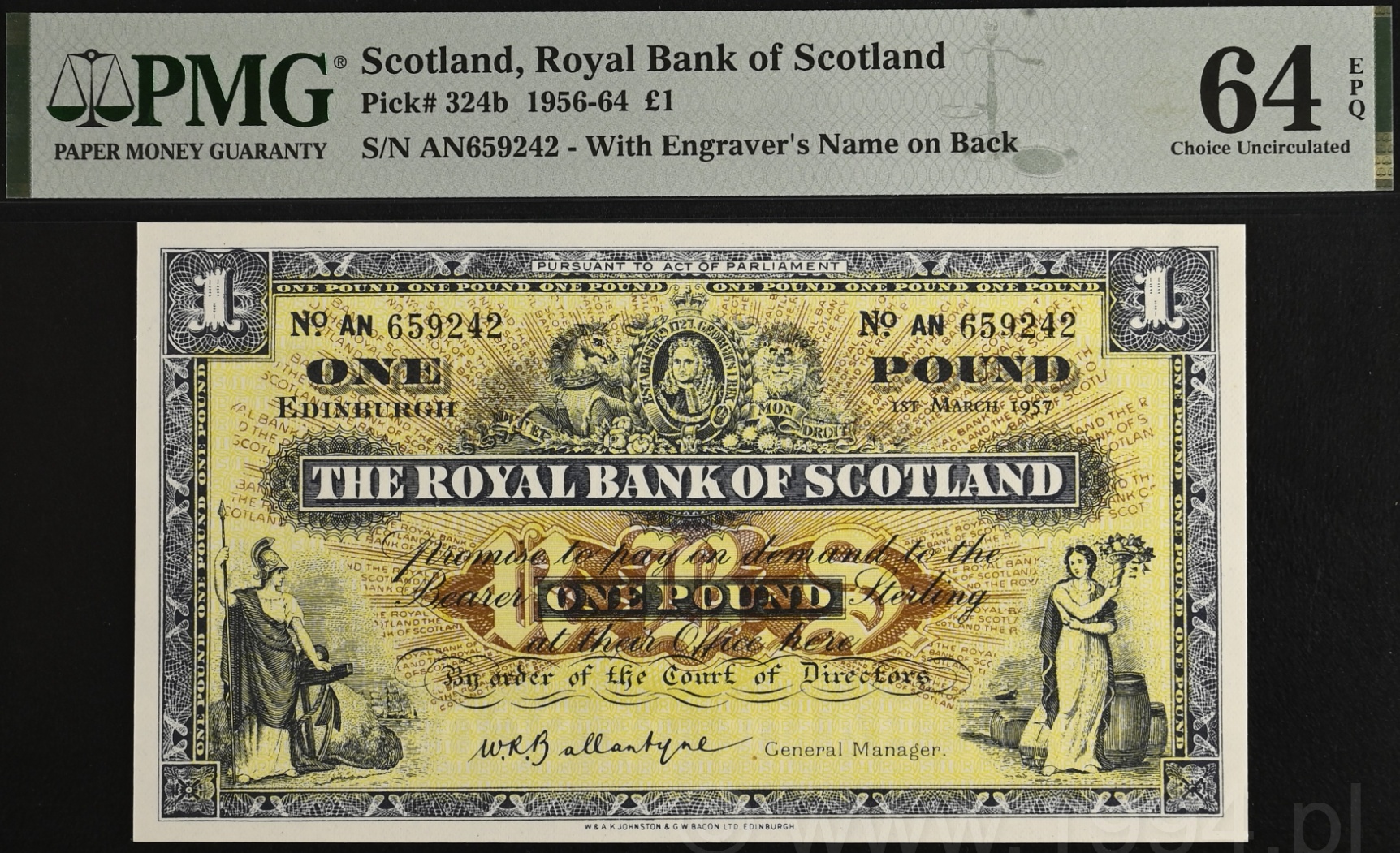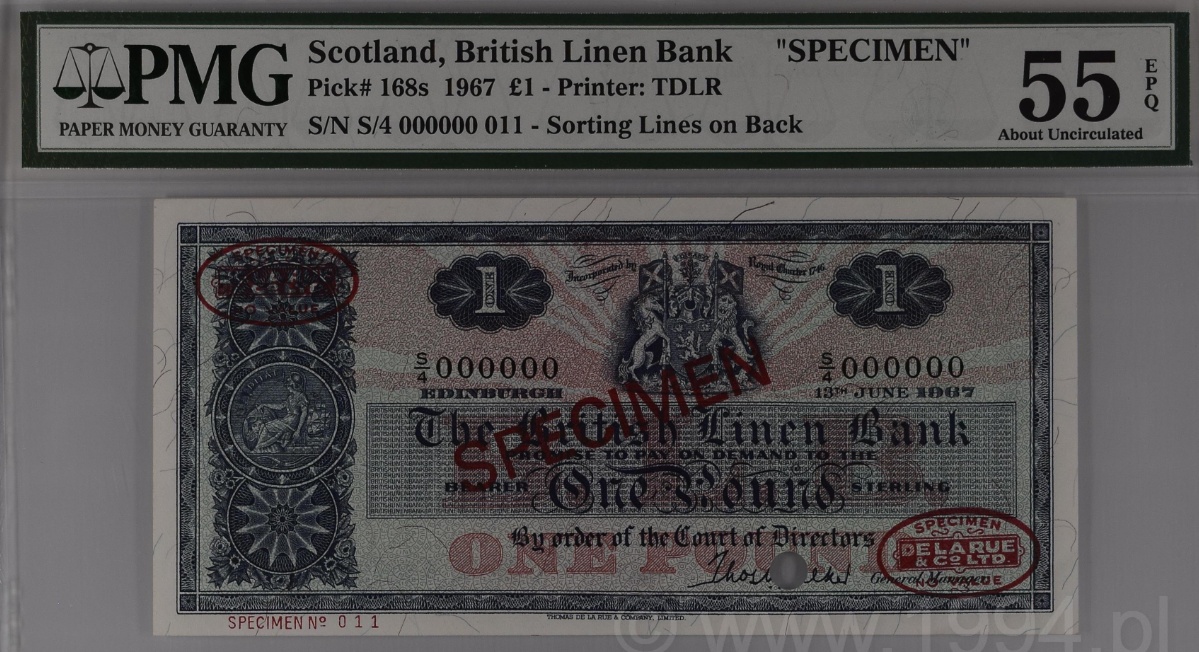By the mid-20th century, Scotland’s banknote tradition remained uniquely decentralized. Three principal institutions —
the Royal Bank of Scotland, the National Commercial Bank of Scotland Limited,
and the British Linen Bank — each issued sterling notes under the Banknote (Scotland) Act framework.
While circulating at par with Bank of England notes, Scottish issues retained their own iconography and engraving
lineage, shaped by generations of domestic and London printers.
The Royal Bank of Scotland £1 of 1956–64 continued a design line reaching back to the eighteenth century:
crowned arms, medallion portrait, and dense micro-lettered back with the engraver’s credit of W. & A. K. Johnston
and G. W. Bacon Ltd of Edinburgh. It stands as the last wholly Scottish-engraved note before production moved to
London-based firms.
The National Commercial Bank £1 of 1959, printed by Bradbury Wilkinson & Co., introduced a modern
aesthetic — the Forth Bridge spanning its face as a national symbol of engineering strength, paired with the watermark
“Head of Caledonia.” The National Commercial merged with the Royal Bank a decade later, ending a corporate identity that
had defined Scottish retail banking for generations.
The British Linen Bank £1 Specimen of 1967, produced by Thomas De La Rue & Co., represents the
transition from artistry to compliance printing. Red SPECIMEN handstamps and control numbers mark the new De La Rue
system of specimen distribution, replacing proofs with standardized reference copies. Within a year, British Linen’s note
issue was absorbed by the Bank of Scotland, closing more than two centuries of independent note production.
Together these notes trace the hand-over from local engraving houses to international security printers. They encapsulate
a distinct Scottish currency identity — technical, dignified, and regionally autonomous — within the broader sterling
system. Each surviving proof or specimen anchors a chapter of that transition from craft engraving to consolidated
industrial print.


